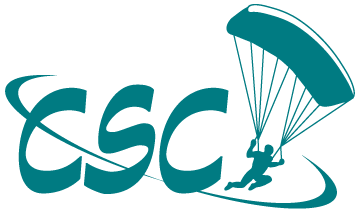Skydiving and Extreme Sports
It's not about adrenaline, it's about flow state
Dopamine and adrenaline. That is what we think of when we first think of skydiving. Every skydiver has been accused of being an "adrenaline junkie" as the accuser references a random Patrick Swayze quote from Point Break. But, that isn't exactly true. It's not adrenaline alone. The first taste of flight conducts a euphoric symphony of brain chemicals creating the most potent high one can naturally experience. It is what focusses our minds, encourages our drive, and pushes us toward greater accomplishments.
In more simple terms, it creates flow.
Flow is key to growth and drive within any activity. It is what encourages us to quickly create muscle memory and perform under pressure. So, you might see why it is not only what drives us to, but also the key to continuing to strive for more within the sport of skydiving.
Flow state has been a major topic of discussion and much research for the psychological community. We find it important that skydivers take advantage of, and educate themselves and one another about creating, and remaining in flow state for more effective learning, and life saving responses.
Ellis, Gary D.; Voelkl, Judith E.; Morris, Catherine writes in their published article here that flow is "a mental state in which a person performing some activity is fully immersed in a feeling of energized focus, full involvement, and enjoyment in the process of the activity. In essence, flow is characterized by the complete absorption in what one does, and a resulting transformation in one's sense of time.”
Pulitzer Prize Nominated author and creator of The Flow Research Collective, Steven Kotler, talks about creating flow within ourselves, and our students...
"Let’s talk about one of flow’s most potent triggers (and touch on how to coach around it).
It’s called the "challenge/skills ratio.”
You’ve probably heard of it. The idea behind this trigger is that attention is most engaged (i.e., in the now) when there’s a very specific relationship between the difficulty of a task and our ability to perform that task. If the challenge is too great, fear swamps the system. If the challenge is too easy, we stop paying attention. Flow appears near the emotional midpoint between boredom and anxiety, in what scientists call the flow channel — the spot where the task is hard enough to make us stretch but not hard enough to make us snap.
How hard is that?
Answers vary, but the general thinking is about 4 percent.
That’s it.
That’s the sweet spot. If you want to trigger flow, the challenge should be 4 percent greater than the skills. In technical terms, the sweet spot is the end result of what’s known as the Yerkes-Dobson law - the fact that increased stress leads to increased performance up to a certain intensity, beyond which performance levels off or declines.
In real-world terms, it’s not much at all. In most situations, we blow by 4 percent without even noticing. But, this is not the case in extreme sports. In the big waves, big rivers, and big-mountains, a half degree of difficulty can mean the difference between home for dinner and never home again. Under these conditions, the desire for improvement keeps athletes from under stepping, and the need for survival from overstepping.
This sweet spot keeps attention locked in the present.
When the challenge is firmly within the boundaries of known skills - meaning I’ve done it before and am fairly certain I can do so again - the outcome is predetermined.
We’re interested, not riveted.
But when we don’t know what’s going to happen next, we pay more attention to the next.
Uncertainty is our rocket ride into the now. It’s also for this reason that uncertainty causes the brain to release dopamine. A lot of dopamine. When anything can happen, survival could be at stake. Dopamine heightens attention and pattern recognition -and yea two things that are absolutely essential to dealing with the unknown.
Of course, being dopamine, this is all exceptionally pleasurable. Or, as Stanford neurologist Robert Sapolsky likes to say: "maybe (meaning uncertainty) is addictive like nothing else out there." And maybe it is also the only road to impossible.
This is why the challenge/skill ratio is so important. If we want to achieve the kinds of accelerated performance we’re seeing in action and adventure sports, then it’s 4 percent plus 4 percent plus 4 percent, day after day, week after week, months into years into careers.
This is the road to real magic.
Follow this path long enough, and not only does impossible becomes possible, it becomes what’s next — like eating breakfast, like another a day at the office. The more you can get your (students) to see this, and calibrate their performance accordingly, the better results (and progress) you’ll see from them.) " - Steven Kotler
That is pretty crazy, right? 4%? This is why your coaches and instructors encourage you to slow down. Take a breath. Allow the mind to process and permeate what you have just learned while in that state of flow.
"Enjoy the process." Because that process IS flow. And flow is where we thrive.
How do YOU find a state of flow?
Do you have any tricks or tips that you use for emotional management of your students and team to encourage their movement into flow?
Comment and tell us about your experiences below!
For more on what flow state, the Challenge/Skill ratio, and tips for more effectively producing it within your life- please see the links below:
https://troyerstling.com/the-challenge-to-skills-equation-and-how-to-use-it-as-a-framework-for-life/
https://www.betterup.com/blog/flow-state
https://link.springer.com/chapter/10.1007/978-1-4614-2359-1_4
https://www.asianefficiency.com/productivity/6-steps-getting-flow-state-maximizing-productivity/
https://positivepsychology.com/mihaly-csikszentmihalyi-father-of-flow/

